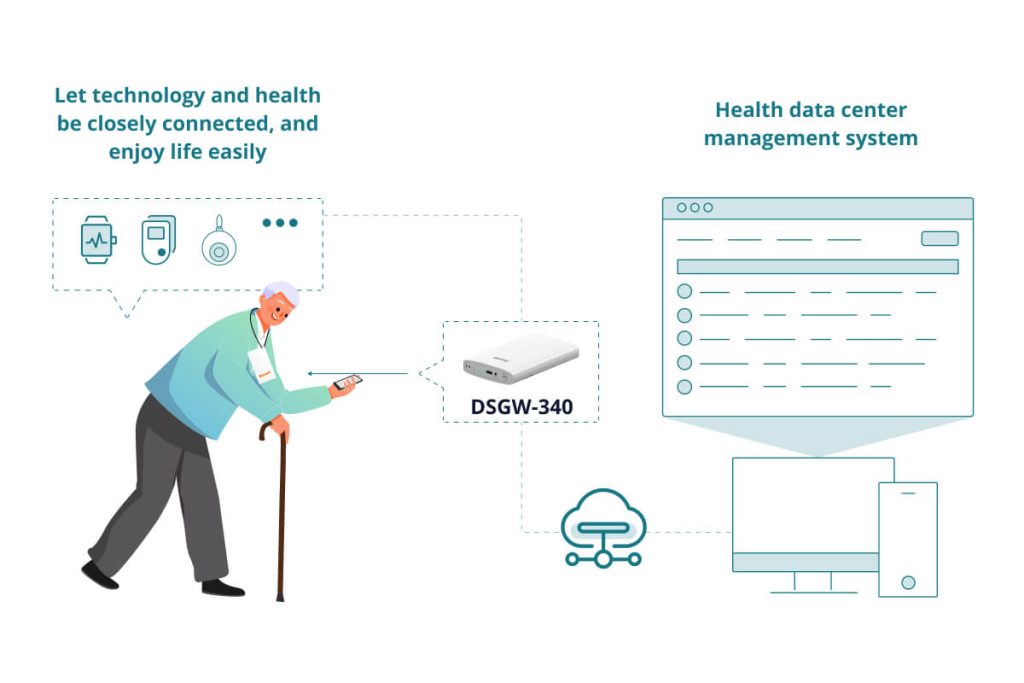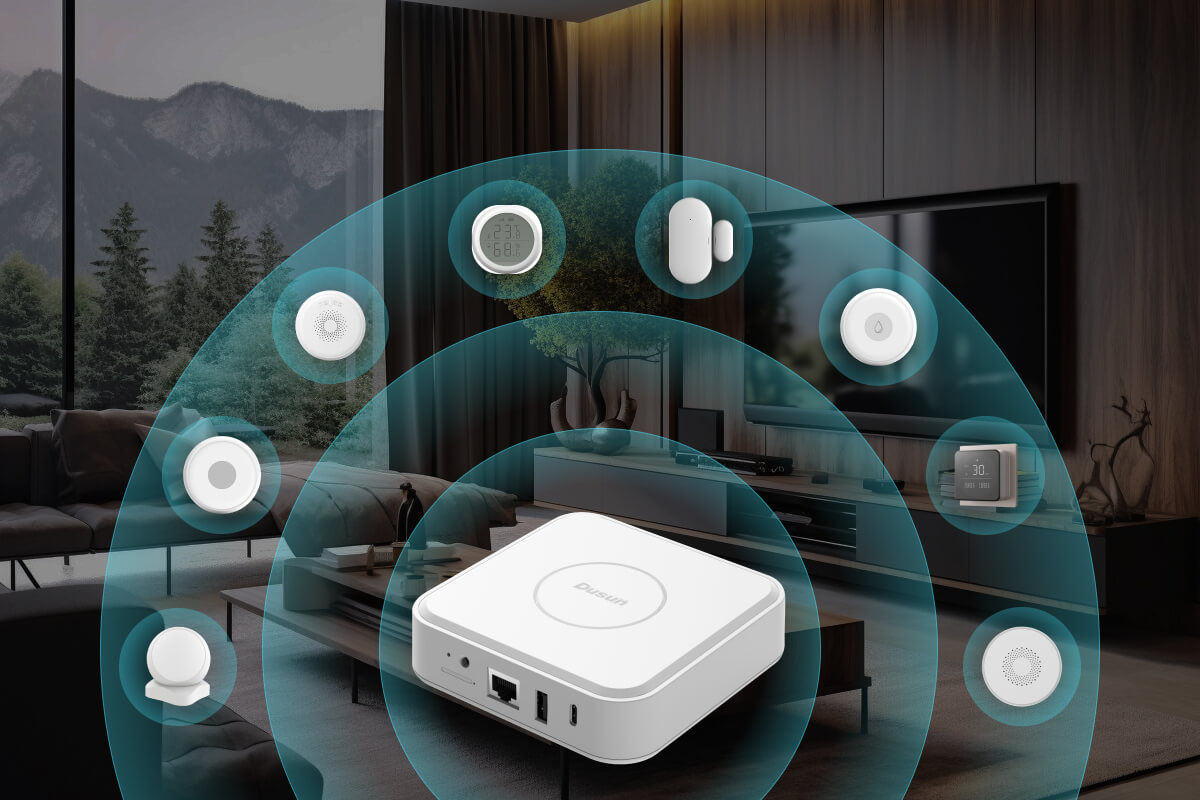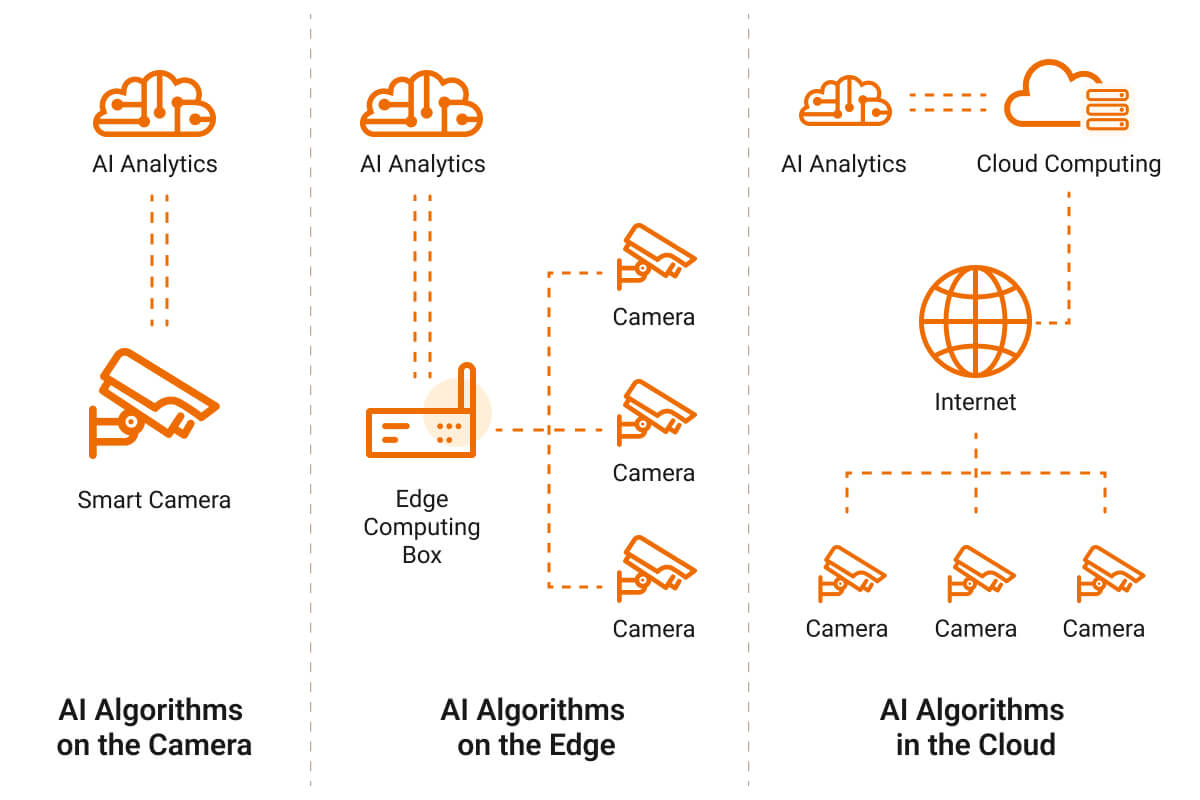Why Does Elderly Monitoring Need IoT?
Elderly persons are scientifically defined as people aged 65 and above. The number of people aged 65 and above hit 761 million in 2021, representing 1 in 10 people. According to a UN report, this number is expected to rise to 1.6 billion by 2050, representing 1 in 6 people globally, while the most vulnerable ones (80 and above) are expected to be 459 million persons.
This demographic is vulnerable to a myriad of diseases associated with old age, and their weakening bodies can easily suffer from injuries that lead to long-term pain, disability, or even fatality.
Therefore, it is important to provide round-the-clock monitoring for these people to ensure they lead a safe, independent, and comfortable life. IoT enables this type of monitoring, including safety, at low costs.
IoT for Elderly Care: How it Works?
Once you understand the IoT concept, you’ll see how useful it is in monitoring elderly parents remotely. IoT is basically a network of physical devices that are known as “things”. These devices are fitted with software, smart sensors, and communication technologies to enable data sharing, interaction, and remote control using user devices, such as smartphones.
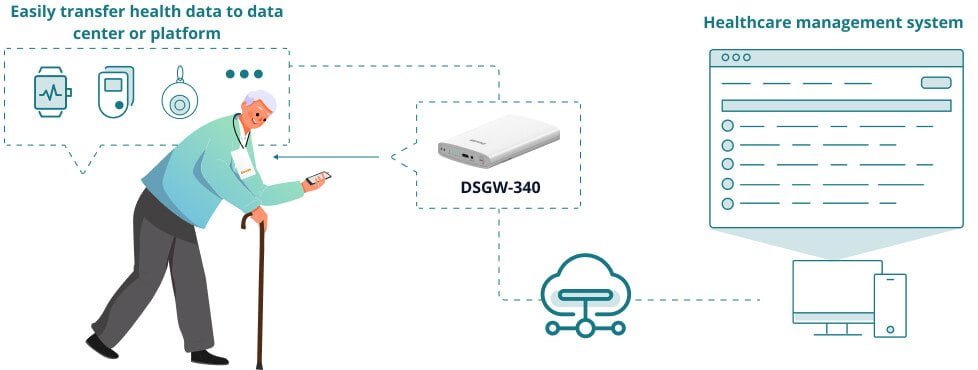
In a nutshell, these “things” are the data sources in the network, and they include medical wearables, mounted sensors, cameras, and detectors placed around the home. Wearable sensors are particularly crucial for health monitoring purposes because they run analytical algorithms to detect and manage the elderly person’s daily activities.
The IoT architecture includes these data sources to provide remote monitoring, a data collection center like an IoT gateway to interconnect the sensors and aggregate their data, and a cloud platform for data collection and analysis. From there, this data can be shared with the relevant medical personnel or institutions via applications for business intelligence and data visualization. Caregivers, such as nurses and primary care physicians, fall into this band, which brings the low-cost monitoring aspect into play.
Also read:
Technical article: How Bluetooth gateway enable hospital patient monitoring?
Case study: Home Health Monitoring LTE Gateway For Digital Healthcare Solution Vendors
These two initial layers must be installed in the elderly’s home, and they share their data with a centralized cloud. So caregivers don’t have to visit each elderly person daily and be there throughout. They only have to monitor their status, making it possible for one person to handle multiple seniors concurrently and efficiently.
Case study: Remote Pulse Oximeter Monitoring at Taikang Elderly Community
Essentially, IoT is a productivity enhancement tool that caregivers can use to check on their patients only when necessary, saving time and cost.
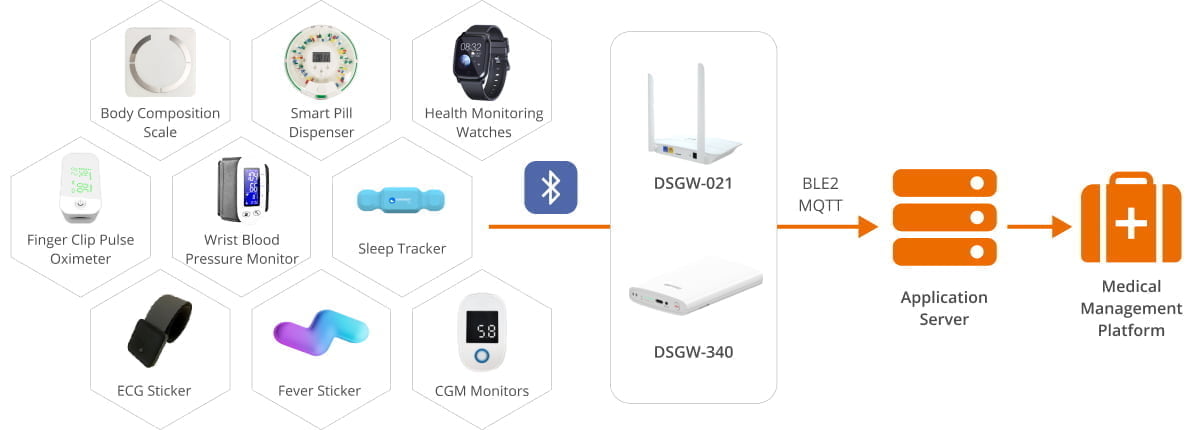
Typical Use Cases of Remote Home Monitoring for Elderly Persons
To drive the point home, let’s look at five remote home monitoring for elderly use cases that rely on IoT to enhance caregiving efficiency.
Home Patient/Health Monitoring
Health monitoring is one of the core aspects of IoT remote elderly monitoring because 94.9% of adults aged 60 and above have at least one chronic condition. These include diabetes, high blood pressure, arthritis, obesity, heart disease, and high cholesterol.
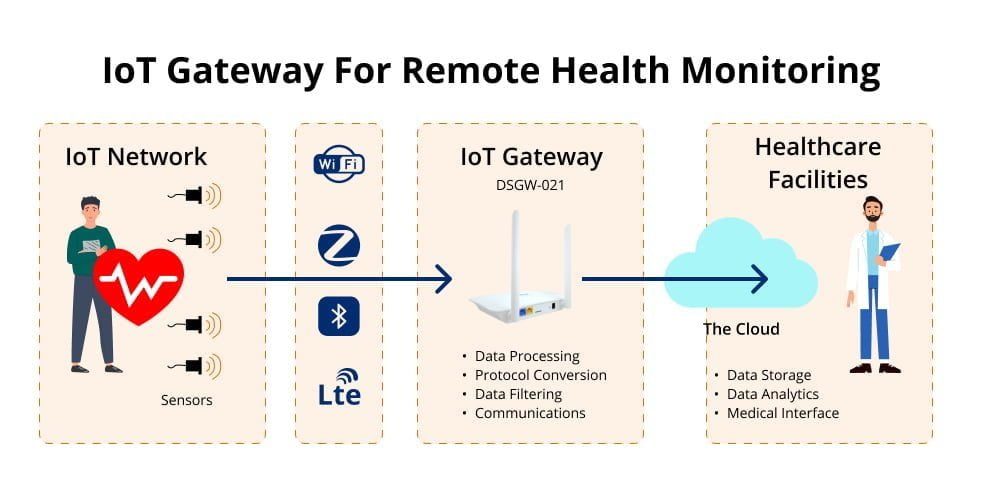
Instead of having a nurse or PCP do rounds daily or according to the stipulated schedule in the patient’s homes, wearables like blood sugar monitors, heart rate monitors, and other specialized sensors can monitor the patients and send alerts only when conditions are abnormal.
Some elderly persons also have memory lapses and can forget to take their medication. Vibration sensors installed on smart pill boxes can register if they take their medications on schedule and send alerts if skipped for too long. Vibration sensors can also help to check the dietary patterns of these patients.
Also read:
ECG Monitoring using Bluetooth Gateway
Continuous Glucose Monitoring Using IoT Technology
Parkinson Disease Monitoring Using Smart Watches
Fall Detection
IoT sensors can detect factors that increase the chances of falling, such as water leakages. These water leak sensors alert the senior if there are hidden water leaks to prevent accidental slipping, and the caregiver to schedule immediate fixing.
But if this mishap happens, the elderly can use emergency buttons in their pockets to send SOS messages, requesting assistance. A 24/7 monitoring station can then send the relevant caregiver (nurse, family member, etc.) to come to the rescue.
Smart AI cameras can also enhance the fall detection capabilities of the elderly care IoT solution by eliminating manual user input.
Movement Monitoring
With elderly persons, anything can go wrong, so it is important to keep tabs on their daily movements to ensure they are alive and kicking. Motion detectors can monitor their movement from when they wake up to going to the bathroom, kitchen to prepare breakfast, and living room to relax and watch TV.
For this use case, door and window sensors are also critical because they can track when these seniors move around indoors and leave the house.
Video Monitoring
The elderly are not hostages, but to get proof of life, video monitoring is necessary, especially when the patient is on the couch. Motion sensors will detect no movement for a while, but cameras can show you if the senior is okay.
Security and Safety
Most seniors live alone, so security and safety are paramount. For security, smart AI cameras, and door and window sensors can be used to detect intruders. These devices can also detect if there’s more than one person at home if he/she lives alone.
For safety, the IoT solution can detect fire (smoke), gas, or water leaks, and take the necessary action. For instance, elderly patients with dementia can leave the gas stove on without the flame burning, but with gas detectors, this won’t be a safety issue. These detectors can trigger alerts and valve closures on the supply line.
Technologies Used by Elderly Care IoT Solutions
AIoT
I’ve already shown you how IoT enhances caregiving. The addition of AI into the mix makes it even better because the technology introduces things like machine vision to strengthen monitoring and health management. For instance, smart AI cameras can provide high-precision fall detection capabilities.
Edge Computing
Edge computing is critical for automating tasks, and I’ll refer to the safety example above on this one. With the gas leakage issue, an edge computing gateway will automatically instruct the gas valve to close, preventing the potential fire risk. Since this task happens at the edge, it is quick and doesn’t rely on the external network, which can go down.
Geofencing
This technology is handy for dementia patients. A geofence helps to contain them within the compound and alerts caregivers if the senior crosses the safety perimeter. Plus, with a wearable GPS tracker, it will be easy to track the patient if he/she gets lost.
Smart Glasses
Smart glasses make it easy for family caregivers (spouse or children) to take care of their elderly family member correctly through the guidance and remote eyes of caregiving professionals.
Robots
As AI advances, robots are becoming more practical for elderly care. Instead of having a fixed camera to provide machine vision capabilities, you can incorporate a robot into the solution to follow the elderly patient around.
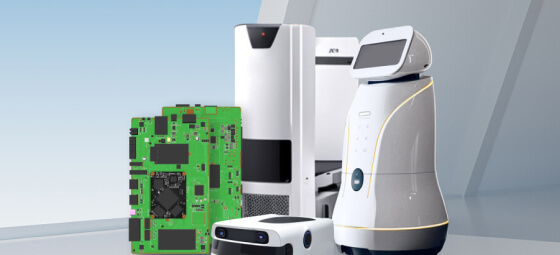
The robot can remind the patient to take the required medication at the specified time, provide assistance if he/she falls, and even be a companion because these people mostly live alone. Robots can unlock limitless possibilities when it comes to elderly monitoring and care.
Also read: The feasibility of using RK3588 as robot control board
Devices for Smart Home Elderly Monitoring
IoT smart home elderly monitoring solutions can have a wide variety of devices that make them costly and sophisticated. But as a start, you should have these basic devices.
IoT Gateway
Gateways are the communication hubs that link the entire network of sensors, smart devices, wearables, cameras, etc., to the cloud, which then connects to the application layer for caregivers to monitor the elderly.
At a minimum, these devices should provide multiprotocol wireless connectivity (BLE, ZigBee, Wi-Fi, Z-Wave, Matter, etc.) to handle all the end nodes (sensors, cameras, and wearables). But to create the best solution, I recommend using advanced gateways with edge computing capabilities to automate some functions, and the one that comes to mind is the DSGW-210 IoT edge gateway.
Sensors
From the use cases above, the solution needs:
- Door and window sensors for safety
- PIR motion sensors to track movement
- Smoke detectors for safety
- Water leak sensors to prevent falling
- Temperature and humidity sensors for comfort
- Emergency button for SOS medical alerts
- Gas detectors for safety
- Vibration sensors for medication management
Wearables
The elderly should have a heart rate monitor for ECG monitoring and a blood sugar monitor for continuous glucose monitoring.
Cameras
Regular cameras can work, but smart AI cameras provide machine vision processing on the edge for accurate fall detection.
Smart Home Devices
To make the home easier to manage, it should have smart home devices, such as lights, fridges, thermostats, and blinds, which the caregiver can access remotely and the elderly person can control using voice, a mobile app, or both.
Challenges of Remote Monitoring for Seniors
Implementing remote monitoring solutions for elderly parents is not without its challenges. Some of the most notable ones include:
Inaccurate Sensors
Substandard sensors can significantly affect the operational efficiency of this remote IoT elderly monitoring solution because they can trigger false alerts, resulting in unnecessary caregiver visits.
High Energy Consumption
IoT-based remote elderly monitoring increases productivity and revenues but the hardware can increase the power bills or battery replacement maintenance costs if they don’t have low energy consumption features.
Monitoring Permission
Senior citizen video monitoring is a thorny issue because it infringes on privacy and alters the perception of what is otherwise their home. So one of the challenges of such remote monitoring solutions is to get older people to consent to round-the-clock monitoring.
Data Privacy and Security
IoT-based monitoring systems generate tons of data from all the installed sensors. This data is at risk of being intercepted by bad actors once it crosses over to the internet (gateway to cloud connection).
Final Words – How Dusun IoT Can Help You Develop Home Elderly Monitoring Solutions?
Dusun addresses the challenges above to make remote home elderly monitoring a viable solution by providing programmable IoT gateways, AIoT SoMs, embedded boards, and turnkey solutions.
With programmable gateways, you can port your custom-made software and firmware, meaning you have total control over the security levels and encryption implemented for data privacy and security. You can also customize the software’s UI to give caregivers and the elderly an easier time accessing the data and adjusting home appliance settings.
Additionally, Dusun AIoT SoMs like the DSOM-040R Rockchip RK3588 provide AI computing at the edge, making them useful for developing devices like smart cameras and robots for assisted living. We also have embedded boards for developing various medical devices, such as wearable blood glucose monitors. Since smart home appliances are part of the package, Dusun can help you simplify their UI by integrating offline/online voice control modules for hands-free use.
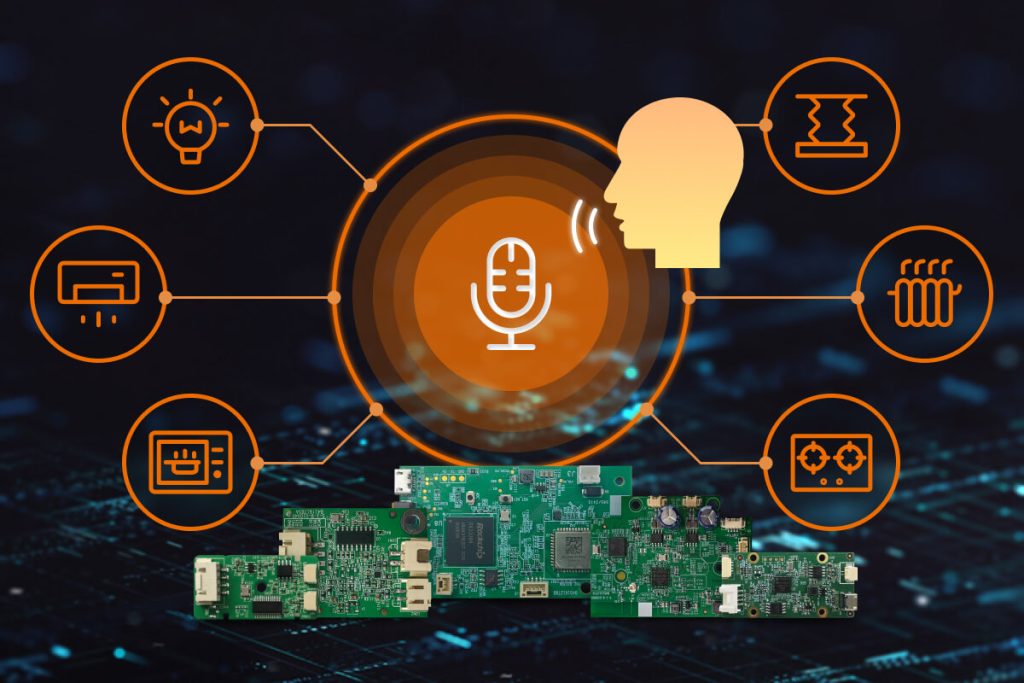
Lastly, we can help you source quality, accurate, reliable, low-power sensors and monitors in the Chinese market for your project.
Basically what you’re left to do is deal with the permission issues, and you can suggest using motion and door sensors instead of cameras to enhance privacy. Contact us with your project’s requirements, and we’ll help you find high-quality hardware to actualize it, while also providing technical support.









